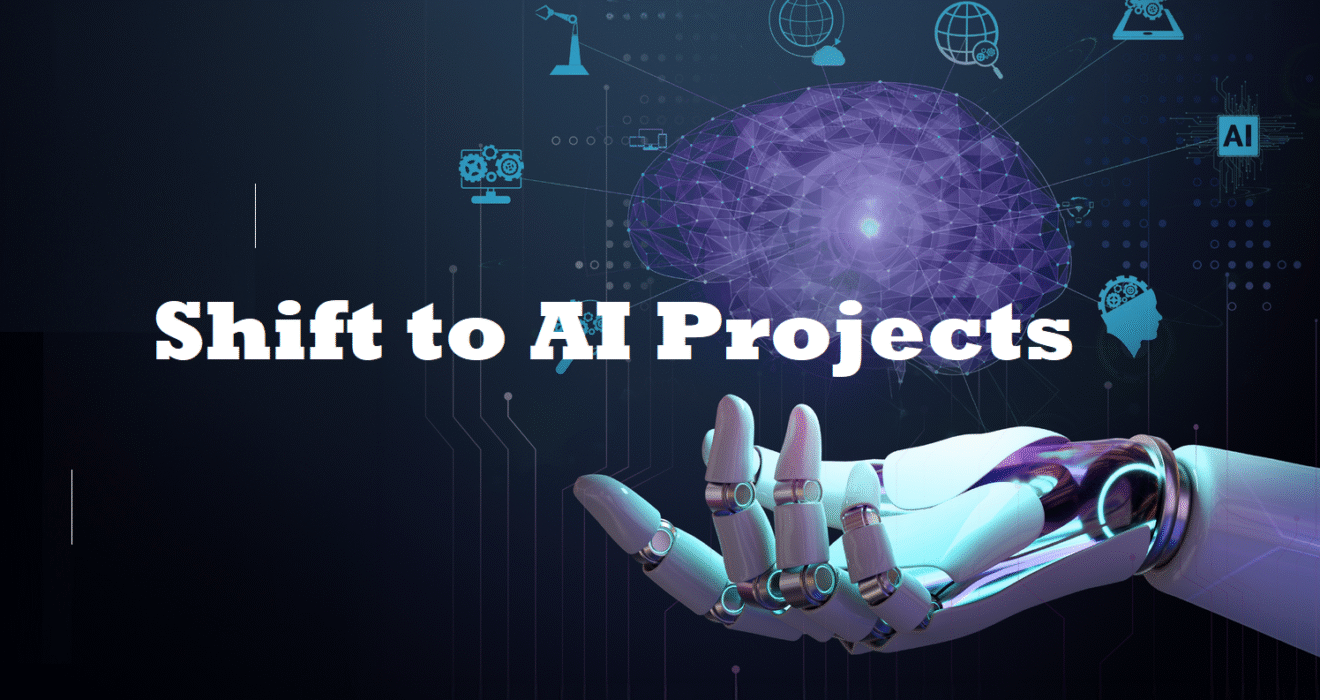Shifting to AI (Artificial Intelligence) projects is a strategic move driven by the need for efficiency, competitiveness, and innovation in nearly every industry. AI is not just a buzzword—it’s a transformative technology that is reshaping how businesses, governments, and individuals operate.
Understanding AI (Artificial Intelligence):
1. Efficiency & Automation
- Reduce manual tasks with AI-powered automation (e.g. data entry, customer support, logistics).
- Increase speed and accuracy of operations.
- Cut down on human errors in complex or repetitive tasks.
Example: AI in manufacturing improves assembly-line efficiency through robotics and predictive maintenance.
2. Data-Driven Decision Making
- AI analyzes large volumes of data faster than any human.
- Delivers insights, trends, and forecasts to make better decisions.
- Supports real-time analytics for adaptive strategies.
Example: Retail companies use AI to forecast demand and optimize inventory.
3. Personalization at Scale
- Tailor services and products to individual customer behavior and preferences.
- Enhance user experiences with chatbots, recommendation engines, and adaptive interfaces.
Example: Netflix and Amazon use AI to personalize content and product suggestions.
4. Competitive Advantage
- Early AI adopters often outperform competitors in cost, speed, and innovation.
- Opens new business models (e.g., AI-as-a-service, autonomous platforms).
Example: Fintech startups use AI for automated trading, fraud detection, and customer onboarding.
5. Cost Reduction
- Long-term operational cost savings through automation.
- Reduce overhead by streamlining workflows, reducing staff burden, and optimizing energy use.
Example: AI in customer service can reduce support center costs by 30–50%.
6. Innovation & New Revenue Streams
- Develop new products or services that weren’t possible before.
- Integrate AI into existing offerings to enhance value or open subscription/AI-driven SaaS models.
Example: AI in healthcare enables predictive diagnostics and personalized treatment.
7. Risk Management & Cybersecurity
- AI can detect threats and anomalies faster than human analysts.
- Helps manage compliance, fraud detection, and operational risk.
Example: Banks use AI to detect suspicious transactions in real time.
8. Government & Public Sector Modernization
- AI can streamline public services, traffic systems, smart cities, and citizen engagement platforms.
- Improves efficiency, transparency, and service delivery.
📈 Summary: Key Benefits of Shifting to AI
| Benefit | Impact |
|---|---|
| ⚙️ Automation | Saves time and reduces costs |
| 📊 Analytics | Better, faster decisions from data |
| 🧠 Personalization | Enhanced user/customer experiences |
| 💰 Innovation | Creates new markets and revenue streams |
| 🔐 Security | Smarter protection and risk management |
| 🏁 Agility | Helps organizations stay future-ready |





